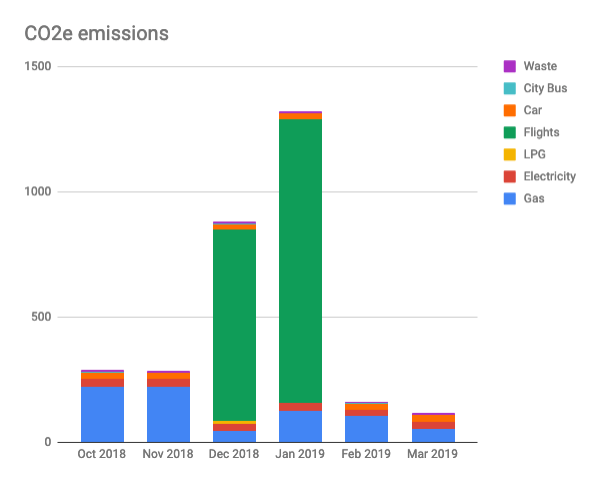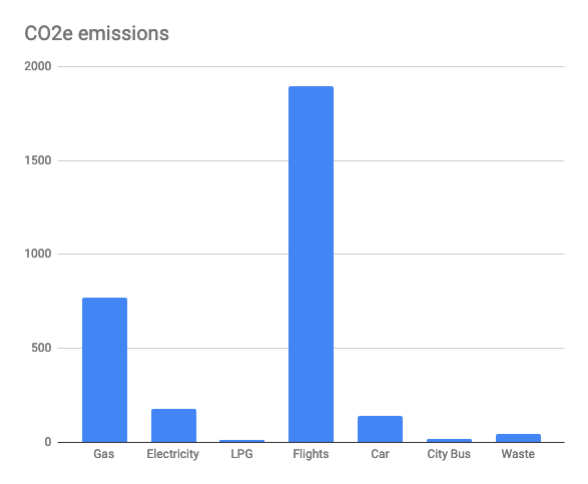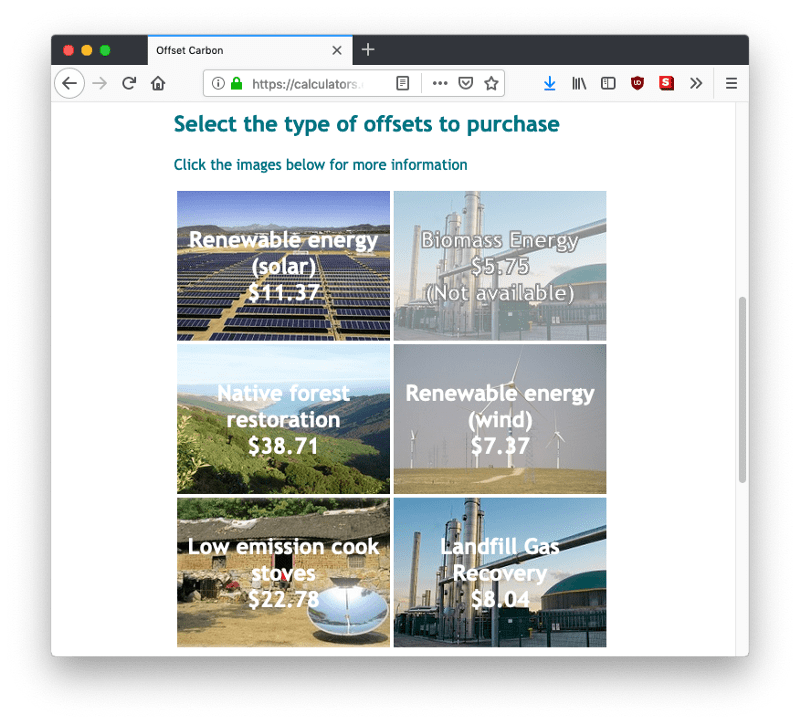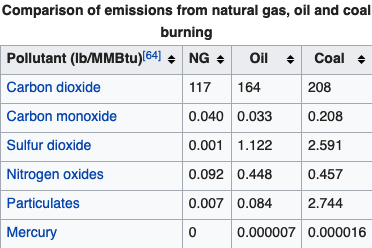Recording our carbon footprint at home
27 April 2019
Measuring our carbon footprint is the first step in the pathway to reducing and eventually eliminating carbon emissions. Being able to visualise where the majority of our emissions come from allows us to identify the places where making a change will have the most impact.
Last year I started recording our emissions, and we now have 6 months of data that is worth sharing.

If you sum up all the emission sources, you can see the proportions.

As you can see, flights and gas (heating, hot water) are our largest emitters. Focusing on reducing these two sources of carbon will have a much larger impact, as together they equal 87% of our emissions.
Data sources
The raw data all comes from our energy suppliers. I then enter this into the Enviro-Mark Household Emissions Calculator, and extract the kg CO2e (kilograms of CO2 or equivalent) figure. I then drop this into a basic spreadsheet to create the charts.
Reducing emissions
What can our family do to reduce and eliminate our CO2 emissions?
When we flew up to Auckland recently, we ticked the Air New Zealand carbon offset box. When you tick this box, Air New Zealand purchase carbon credits on your behalf. The cost of the carbon credits for our return flight for 5 people was $15.70, which does not seem like a large amount of money. According to the Air New Zealand website, these credits are purchased from a variety of sources including some tree planting activities in New Zealand.
Planting a tree only temporarily removes carbon from the atmosphere. Carbon is released again when the tree dies. I see this as better than nothing, but only just. The problem is that the jet fuel that was burnt will never be returned to the earth again.
The Enviro-Mark website also offers a way to purchase carbon offsets. I like the idea of supporting a project with an ongoing benefit, such as energy generation or the removal of energy consumption (low emission cook stoves). Next time we fly, I think we’ll not tick the Air New Zealand box, but instead visit the Enviro-Mark website.

‘Natural’ Gas for heating and hot water
Our main heat source comes from the burning of Natural Gas. Wikipedia explains that this is also known as ‘Fossil Gas’ and comprises mostly of methane. The chart from Wikipedia shows that it is somewhat cleaner that burning oil and coal. I had thought the difference was more.

We need to stop burning this stuff soon.
New heat source
We need a new heat source that doesn’t require burning fossil fuels. In Wellington, I believe the options available include:
- Wood fires
- Electricity
We used to have a wood fire at our old place. I love a good fire, but they are a lot of work and are generally either on full or off. It’s difficult to maintain a steady temperature.
Electricity is the natural choice. Especially in New Zealand where are electricity generation is very clean (and getting cleaner). With the coming age of the electric car, I can see demand for electricity growing. This will result in even more generation coming online as the market responds to this growth. And that new generation will all be ‘green’ as coal cannot compete with renewable generation these days.
With our recent switch to a zero-carbon electricity retailer, any electricity we do use will be even cleaner.
Heat pumps
A heat pump seems to be the right choice for our family. You can get ‘air to water’ heat pumps (also known as ‘hydronic’ heat pumps) that generate hot water for piping around your house with radiators. We would need to have one retrofitted and replace our existing gas boiler.
Another option would be a whole house, ducted heat pump system.
We would also need a hot water heat pump for showers, etc.
The advantage that modern heat pumps have is the high efficiency. We had a heat pump at our old place, and it had a COP (coefficient of performance) of 3.5. I thought this was amazing, with 1 kilowatt of electrical energy being converted into 3.5 kilowatts of heat energy.
The technology has continued to improve, with many heat pumps having a COP of over 4, and some even exceeding 5. Incredible!
Next steps
We will:
- Explore options around replacing our gas with a heat pump solution
- Keep measuring our emissions
- Try buying carbon offsets from Enviro-Mark
And report back here with progress on how we’re getting on.
Related posts
- My Tesla Powerwall Experience
- Review of the Mitsubushi Ecodan
- All about solar panels
- Four years of household energy costs and emissions
- Comparison of fossil-fuel with electric-only energy costs for spring
- Household energy costs comparison for winter
- Price Comparison of Electricity and Gas
- Energy efficiency after 1 week
- Conversion of gas central heating to electric
- Please don’t wait for the Politicians